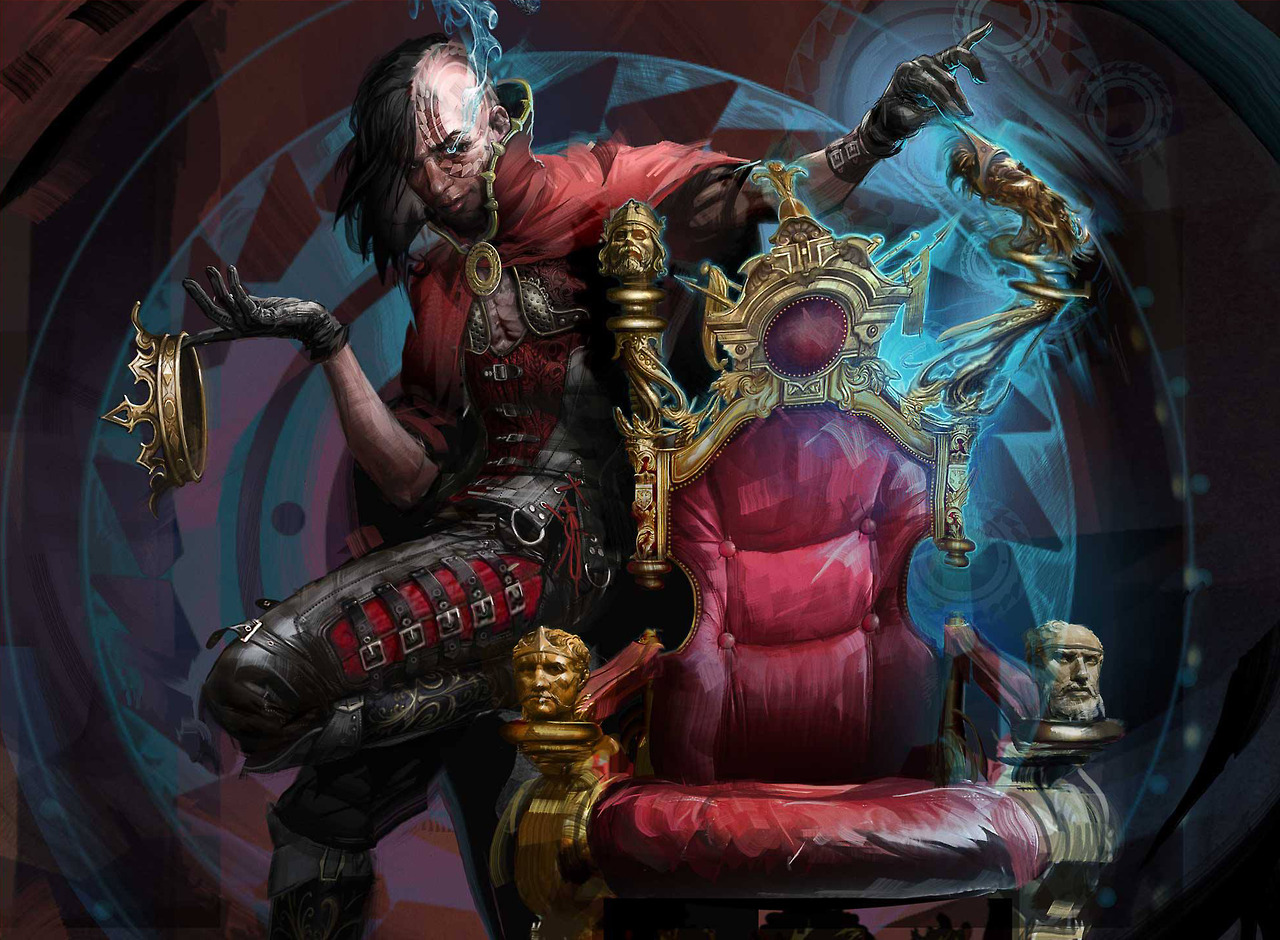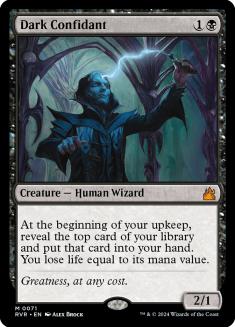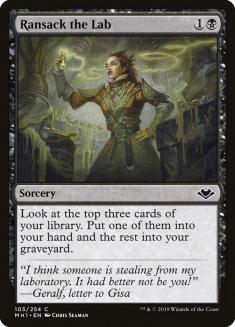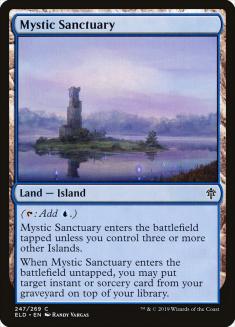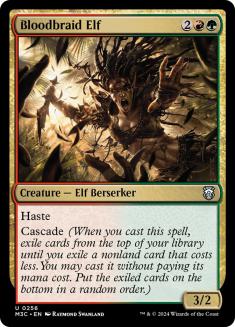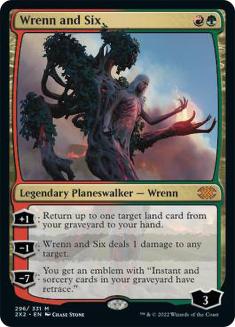Once Upon a Time is finally gone, which means Amulet Titan is closer in power level and consistency to the rest of the format. Big mana is not dead. Far from it, in fact. Mono-Green Tron still looms over the format, as do Amulet Titan and the various flavors of Primeval Titan decks.
However, we may be ushering in a golden age of Modern where interaction matters and where midrange is a large portion of the metagame. This is what I’ve always wanted Modern to be. Each of the decklists I’m presenting today are decks I believe in. Although they aren’t necessarily gunning for the title of Best Deck in Modern, they are decks you wouldn’t have to work too hard to convince me to play in an Open, PTQ, GP, or PT.
Creatures (15)
- 4 Dark Confidant
- 3 Fulminator Mage
- 4 Seasoned Pyromancer
- 2 Lightning Skelemental
- 2 Kroxa, Titan of Death's Hunger
Planeswalkers (2)
Lands (20)
Spells (23)

My first impressions of Rakdos Midrange were not positive. Thankfully, there have been two major improvements to the archetype that make me happy with the archetype.
For now, Dark Confidant is stronger than Dreadhorde Arcanist. Your first threat will typically die on sight but there were certainly games where Dreadhorde Arcanist lived and didn’t do much of anything. The deck didn’t have enough filtering to find a spell that’s worth flashing back in each matchup and it could even get stopped by Tarmogoyf, Ice-Fang Coatl, and the like.
If you’re going to untap with a two-drop, it’d better be one that has a noticeable, immediate impact on the game, and that’s Dark Confidant. I haven’t been happy with Dark Confidant as of late but this deck has a lower mana curve and a relatively painless manabase, both of which work in Dark Confidant’s favor. Another benefit is that opponents frequently brought in graveyard hate against me, leaving Dreadhorde Arcanist relatively useless.
The second improvement came with Ransack the Lab. Rakdos has velocity and relevant graveyard interaction that powers up cards like Unearth and Kroxa, Titan of Death’s Hunger, which was sorely needed. Having a higher percentage of finding your key cards (especially in sideboard games) is huge. I wouldn’t be opposed to adding the fourth copy.
Before the ban, I was starting four Fulminator Mages to beat up on big mana and liked that plan, but we can scale back a bit.
Uro, Titan of Nature’s Wrath may take over Modern at some point. It’s spawning by far the most brand-new archetypes of any single card and is part of what’s pulling the format in the midrange direction. Naturally, I’m taking a look at many of those decks.
Creatures (12)
Lands (27)
Spells (21)

This deck is the real deal. If I were playing a Modern event, I would snap this off as my deck of choice and I would have a blast.
Combo-control has a long history of being powerful in older formats and this is no different. Countermagic is reasonable again, plus you have a defensive tool and win condition that rewards you for doing what you’d normally be doing anyway, which is making land drops. This deck has the potential for fast kills with Scapeshift and happens to have late-game power with Mystic Sanctuary and Uro, Titan of Nature’s Wrath.
Obviously there’s an argument for playing a “superior” ramp deck, such as Amulet Titan, but I’d argue this is more of a control deck that happens to ramp than a ramp deck itself. If you want to play a deck with Cryptic Command and Uro, Titan of Nature’s Wrath, it would be difficult to argue against registering something similar to this Scapeshift deck.
Most lists have tried very hard to make Mystic Sanctuary as consistent as early as possible and I’ve skirted that by a few degrees. However, in a deck that’s ramping and using Mystic Sanctuary as its late-game, it seems acceptable. Having more untapped green sources on Turn 1 for Search for Tomorrow is far more important. Plus, with Dryad of the Ilysian Grove on the battlefield, it doesn’t matter.
Creatures (13)
Planeswalkers (4)
Lands (26)
Spells (17)

Adding Bloodbraid Elf to your Uro deck gives you a tempo element to your gameplan, which can be useful in a format where taking full control isn’t always an option. Archmage’s Charm is one of the few counterspells that happens to work well with Bloodbraid Elf, so we’re not sacrificing any potential utility by restricting the types of cards we can play.
The sideboard certainly takes a hit because Veil of Summer, Mystical Dispute, and other reactive cards don’t work well with Bloodbraid Elf, so you have to play a suite of more proactive cards.
Wrenn and Six is a nice addition to a deck like this because it helps fix your mana and make your land drops while removing the necessity for additional spot removal. It also opens up additional gameplans with Ghost Quarter and Waterlogged Grove.
It might be wrong but I’d like to include the Valakut, the Molten Pinnacle + Dryad of the Ilysian Grove package into something like this. Those cards all play well with each other but this plan is more cohesive. If Ice-Fang Coatl isn’t particularly strong in the format, the snow package could probably go but we’d miss Arcum’s Astrolabe being able to fix our mana for the color-intensive counterspells.
Creatures (7)
Planeswalkers (3)
Lands (26)
Spells (24)

If you wanted another direction, you could also lean fully into the control side of things. I’m far more skeptical of decks like these finding success in Modern but it’s already been happening on Magic Online.
Being able to Thought Scour into Uro is nice but likely unnecessary. With the addition of Growth Spiral, we have enough blue cards for Force of Negation and get to play some Simic Growth Chambers, so there are some minor victories.
Creatures (21)
- 3 Birds of Paradise
- 4 Noble Hierarch
- 4 Spell Queller
- 4 Felidar Guardian
- 4 Ice-Fang Coatl
- 2 Watcher for Tomorrow
Planeswalkers (9)
Lands (20)
Spells (10)

If you need to grind, you could do worse than blinking things. Being able to threaten a combo kill against big mana is another argument in favor of dusting off your Felidar Guardians. The Copy Cat combo is already criminally underrated in Modern and I fully expect it to get stronger in the coming weeks.
Creatures (15)
- 4 Bloodbraid Elf
- 2 Primeval Titan
- 3 Courser of Kruphix
- 2 Seasoned Pyromancer
- 4 Dryad of the Ilysian Grove
Planeswalkers (5)
Lands (28)
Spells (12)

This deck is basically an amalgam of many of the decks in this article. You have the tempo advantage from Bloodbraid Elf, the natural Valakut end-game, and various sources of card advantage to help win midrange fights. Not having access to countermagic certainly weakens the deck against certain archetypes but you do make up for that by having a reasonable clock.
Courser of Kruphix is incredible in this deck. Seasoned Pyromancer, Explore, fetchlands, Forgotten Cave, and even Bloodbraid Elf help Courser find your land drops and gain you card advantage. Being able to play lands off the top of your deck is even more powerful with an Exploration effect on the battlefield, so Dryad does double duty.
A couple of copies of Primeval Titan make up the top-end but they aren’t necessary.
Creatures (10)
Planeswalkers (5)
Lands (24)
Spells (21)

Not much has changed from my last Stoneblade decklist but it bears repeating that Stoneforge Mystic is great at the moment. If the format does shift toward midrange, you’ll want to prepare yourself by having some additional tools for winning those wars of attrition, which probably means something like Narset, Parter of Veils in the sideboard.
Azorius Stoneblade is another fine choice but it’s rather boring when you could be exploring these new green cards and finding out what they’re truly capable of.

